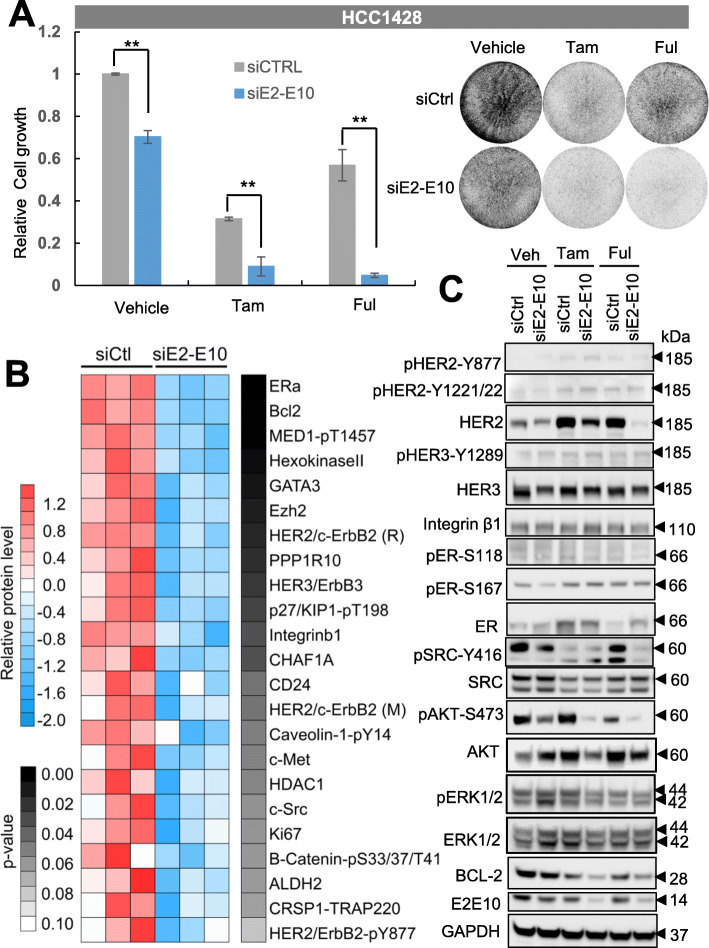Fig. 2.
Silencing of ESR1-CCDC170 increases the endocrine responsiveness of HCC1428 cells. a Silencing of the E2-E10 fusion in HCC1428 cells reduced cell viability as shown by clonogenic assays. Cells were first treated with siRNAs for 3 days in biological triplicates, and then treated with 4-hydroxytamoxifen (Tam, 0.5 μM) or fulvestrant (Ful, 0.1 μM) for 72 h, together with the siRNAs simultaneously. The left chart shows the relative intensity of triplicates (means ± SD) normalized to the cells treated with vehicle and scramble siRNA control (siCtrl). The western blots verifying the knockdown efficiency and the representative images of clonogenic assays are shown on the right. **P < 0.01; Student’s t test. Experiments performed at least three times. b Heatmap showing the top downregulated (P < 0.1) signaling molecules in E2-E10-silenced HCC1428 cells revealed by RPPA data. HER2/c-ErbB2 (R) and HER2/c-ErbB2 (M) indicate rabbit and mouse antibodies detecting the total HER2 protein respectively. c Protein extracts from the HCC1428 treated as in a were analyzed by western blot analysis of key signaling molecules revealed by RPPA

